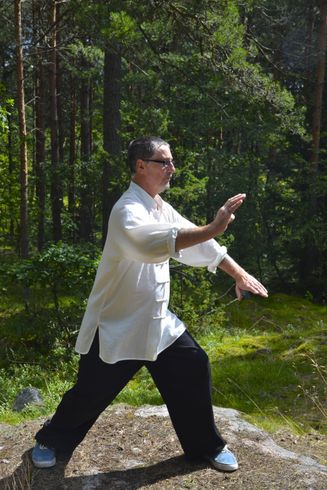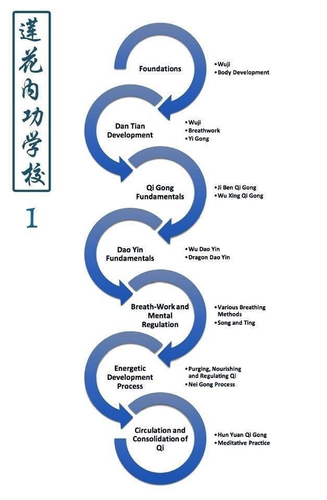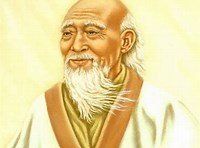
TAIJI QUAN
From the early days of Pauls interest in Taijiquan, it has dominated his studies and as he hoped developed and balanced both his martial arts and inner nature. The Taijiquan of LNG Daoist arts is predominately Yang style within the Zhen Manquin, Huang Xingxian, Naipai and Tian Zhaolin lines. These are all variations on the Yang family tradition and each manifest the Yang family principles in a unique manner. New students are firstly taught the Huang Xiangxian too later be moved through other methods of the Yang family tradition
It is a rare thing in modern times for Taiji practitioners to progress their art into a truly internal system. This is likely mainly due to bad understanding of Taiji principles by early western teachers and therefore bad transmission of Taiji teachings. In LNG the students are taken through a process of applying the two most important principles for true understanding and subsequent ability in Taijiquan being that of; Sung and Ting. These two skills are both relatively simple but at times frustratingly elusive.
Having got to grips with Sung and Ting the students are then taught to apply them in the 37 form of Huang Xingxian whist also being introduced to the two man partner drill of pushing hands ( tui Shou) and how to apply them in a tangible manner. In this way, the expertise of Taijiquan have both form and function.
It has long been the wish of Damo as head of Lotus Nei Gong Daoist arts and also his father Paul Mitchell as a leading teacher in this organization that the modern trend of watering down the wonderful skills possible to achieve through the authentic study and practice of Taijiquan be reversed and more students have access to correct practice methods..
The term Taijiquan translates into English as ‘grand ultimate fist’ but this does not do justice to this Nobel jewel in the crown of Classical Chinese culture. Within the Daoist tradition Taiji is considered to be the motive force of creation. It is the name used for that spiralling spark of life that lies at the beginning of time. It is this energetic vibration that lies at the heart of a true practitioners studies for both martial and cultivational purposes.

NEI GONG
In LNG all students will to varying degrees be exposed to the Nei Gong process. This process is the foundation on which all Daoist arts are based and is the link between martial arts(internal) medicine and meditation. In Nei Gong a student is taken through a process using tools such as Qi Gong or Daoyins in order to assist them to attain good health, mental wellbeing and spiritual development. This is achieved by firstly helping them to become aware of what is known in Daoism as the three bodies of man (physical, energetic and consciousness) and then subsequently working with them.
The method of moving students through this process is to ensure that each, beginning with the physical health of the body is given sufficient time and consideration before moving to the next stage. Having developed a reasonably healthy body, the student is assisted in awakening their energy body and clearing it out, lastly work is done to again assist the student to centre their mind.
Nei Gong is a core principle of Daoism and assists those that wish to advance their training and development by the study of Nei Dan (internal alchemy) or Daoist meditation practice.
In 2011 Pauls son Damo wrote the book; Daoist Nei Gong- Philosophical art of change.
The methods of Nei Gong taught in LNG follow the process outlined in this book.

DAOISM
Paul as an individual has always disliked attaching labels to himself and indeed his belief system. All labels or ‘hooks’ to a person’s mind have always seemed to him to limit the mental freedom that has always been the most precious aspect of his personality. However,’ Daoism’ or the philosophical aspect of this belief system has long held an attraction for him. As a martial artist, he has long perceived himself to be a’ journey person’, someone that considers the road that they travel and the quality of that journey to be more important than any perceived destination.
Daoism can be categorised into three distinct forms Philosophical, religious, and alchemical. Were these as one at one time? It is certainly true that the religious aspects of Daoism have the deities and monks that form a hierarchy just like all religions of the world and as such are likely the least important element of the system in LNG.
Philosophical Daoism; based on the writings of Laozi in the Dao De Jing, which as a piece of work looks at the nature of life and how to unify with a higher state of being known as the Dao is likely to be of great interest to all those that view themselves travellers along the ‘Way’.
Alchemical Daoism’s main practice is of a meditative nature and deeply concerned with spiritual immortality, as such this elusive goal truly out of reach for all but a few truly developed souls is like a tiny light at the end of a long tunnel, maybe actually a destination for the journey person.